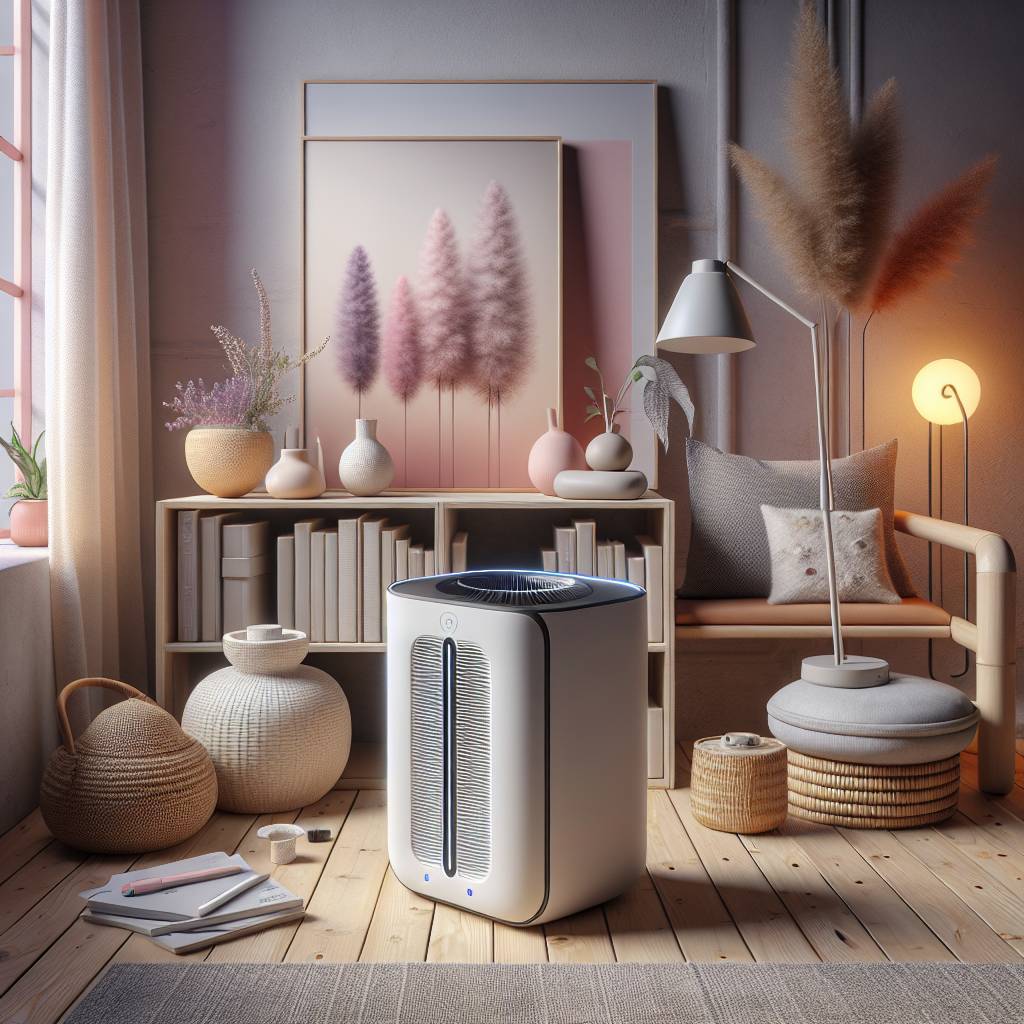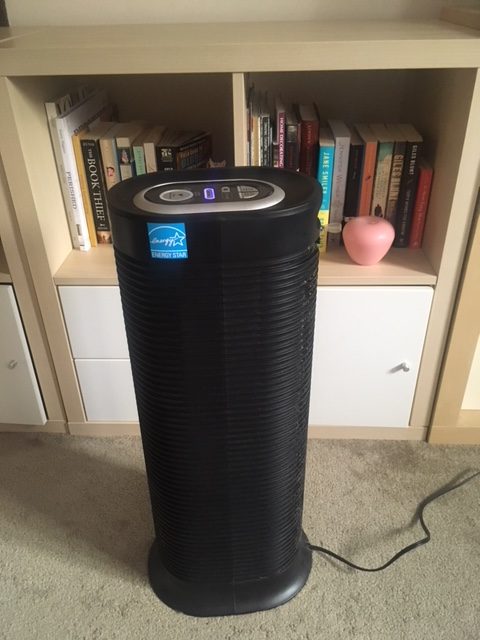How To Choose An Air Purifier For Small Spaces For Asthma
To choose an air purifier for small spaces to help with asthma, look for models with HEPA filters, as they capture fine particles that can trigger asthma symptoms. Ensure the purifier is the right size for your room by checking its coverage area. Also, consider devices with low noise levels to keep your living space peaceful. This way, you can breathe easier and manage your asthma more effectively.

How does an air purifier help with asthma in small spaces?
Air purifiers work by cleaning the air in a room, which is especially helpful for people with asthma. They do this by removing pollutants and allergens from the air. These include dust, pollen, pet dander, and smoke particles that can trigger asthma symptoms.
When used in small spaces, air purifiers can be very effective because they reduce the concentration of irritants in the air. This creates a safer environment for asthma sufferers. By breathing cleaner air, individuals may notice a decrease in their asthma symptoms such as coughing and shortness of breath.
Moreover, using an air purifier in a small space ensures that the clean air is circulated more efficiently. This means that it can quickly remove harmful particles from the air before they have a chance to cause discomfort or trigger an asthma attack.
What are the key features to look for in an air purifier for asthma sufferers?
The first key feature to consider is the type of filter used by the air purifier. HEPA filters are highly recommended because they can trap very small particles, much smaller than what standard filters catch. This makes them particularly effective for capturing allergens that trigger asthma symptoms.
Wish to improve your home’s air for asthma? Learn about our favorite air purifier for asthma and how it targets irritants. Find out more about its capabilities now.
Another important feature is the clean air delivery rate (CADR). The CADR indicates how well an air purifier cleans the air of specific pollutants. A higher CADR means more efficient cleaning, which is crucial for individuals with asthma as it ensures quicker removal of irritants from their environment.
Last but not least, look for an air purifier with adjustable settings. This allows users to control how quickly or slowly the device cleans the room’s air. During high pollen days or when there’s more dust in the home, being able to increase the purification speed can be very beneficial for managing asthma symptoms.
How do HEPA filters in air purifiers benefit individuals with asthma?
HEPA filters stand out because they can capture at least 99.97% of airborne particles as small as 0.3 microns. This includes most allergens and irritants that cause problems for people with asthma. By trapping these particles, HEPA filters prevent them from circulating back into the room’s air.
This high efficiency makes HEPA-equipped air purifiers extremely beneficial for individuals with asthma. With fewer allergens and pollutants in their breathing space, these individuals often experience fewer symptoms and enjoy better overall respiratory health.
In addition to capturing allergens, HEPA filters also help reduce odors and smoke — both of which can exacerbate asthma symptoms. This further enhances indoor air quality and creates a healthier living environment for those affected by this condition.
What size air purifier is needed for a small room or apartment?
To choose the right size of an air purifier for a small room or apartment, it’s essential to consider its square footage coverage capability compared to your space’s size. For smaller rooms or apartments under 500 square feet, look for compact models designed specifically for such areas.
An easy way to ensure you’re getting an appropriately sized unit is by checking its CADR rating against your room’s square footage. A higher CADR rating generally means it’s capable of cleaning larger areas effectively; however, even within smaller spaces, opting for a model with a slightly higher CADR than necessary can offer faster and more efficient purification.
Remember that placing your compact-sized purifier strategically within your space will maximize its effectiveness—ideally near common sources of indoor pollution like windows or kitchens but away from obstructions like furniture and curtains that could hinder airflow.
| Feature | Description | Why Important for Asthma |
|---|---|---|
| HEPA Filter | High-Efficiency Particulate Air filter capable of removing at least 99.97% of dust, pollen, mold, bacteria, and any airborne particles with a size of 0.3 microns. | Removes small particles that can trigger asthma symptoms. |
| Size/Coverage Area | Indicates the maximum area in which the air purifier can effectively clean the air. For small spaces, look for purifiers designed for rooms up to 200-300 square feet. | Ensures the air purifier is efficient in confined spaces, maintaining clean air where it’s most needed. |
| ACH (Air Changes per Hour) | Refers to how many times the air purifier can filter the total volume of air in the treatment space each hour. Aim for 4 to 6 ACH for asthma sufferers. | Higher ACH rates mean more frequent air cleaning, reducing asthma triggers in the environment. |
| Filter Replacement Indicator | A feature that alerts you when it’s time to replace the filter, ensuring the air purifier operates at peak efficiency. | Prevents decreased performance that could lead to an increase in asthma triggers. |
| Noise Level | Measured in decibels (dB), it indicates how loud the air purifier will be when operating. Look for models with a noise level of 50 dB or lower for bedrooms or small living spaces. | Ensures the air purifier doesn’t disrupt sleep or daily activities, which is crucial for overall health and well-being. |
| Smart Features | Includes Wi-Fi connectivity, air quality sensors, and automatic mode adjustments based on the air quality. | Provides convenience and ensures the air purifier adapts to the needs of asthma sufferers, maintaining optimal air quality. |
| Energy Efficiency | Look for ENERGY STAR rated air purifiers, which are 40% more energy-efficient than standard models. | Reduces energy consumption and cost, important for devices running continuously. |
How often should filters be replaced in air purifiers used for asthma in small spaces?
Replacing the filters in your air purifier is crucial to maintain its effectiveness, especially in small spaces where asthma sufferers need clean air. Most manufacturers recommend changing the filters every 6 to 12 months. However, this can vary based on how much you use the purifier and the air quality in your area.
If you live in a place with high pollution or you have pets that shed fur and dander, you might need to replace the filters more frequently. A good rule of thumb is to check the filter’s condition every three months. If it looks dirty or clogged, it’s time for a new one.
Are there specific brands or models of air purifiers recommended for asthma sufferers?
Yes, certain brands and models of air purifiers are better suited for individuals with asthma. Look for air purifiers that have HEPA filters as they are highly effective at capturing fine particles that can trigger asthma symptoms. Brands like Honeywell, Dyson, and Levoit are often recommended by healthcare professionals.
Additionally, some models come with features specifically designed for asthma sufferers, such as air quality sensors and customizable settings. These allow users to adjust the purification level based on their current needs, providing an extra layer of protection against asthma triggers.
What maintenance tips ensure the effectiveness of an air purifier in managing asthma symptoms?
To ensure your air purifier continues to help manage asthma symptoms effectively, regular maintenance is key. Always follow the manufacturer’s instructions for cleaning and maintaining your device. This usually includes wiping down the exterior with a damp cloth and vacuuming any pre-filters to remove dust buildup.
It’s also important to keep the area around your air purifier clear from obstructions like furniture or curtains. This ensures proper airflow through the device so it can efficiently clean the air in your space. Remembering these simple tips can make a big difference in controlling asthma symptoms.
Final Thoughts
Air purifiers play a significant role in managing asthma symptoms, especially in small spaces where pollutants can easily accumulate. By regularly replacing filters, choosing suitable models, and performing routine maintenance, individuals with asthma can enjoy cleaner air and fewer symptoms.
Remember that while an air purifier can significantly improve indoor air quality, it should be used as part of a broader strategy for managing asthma that includes avoiding known triggers and following medical advice. With the right approach, those suffering from asthma can lead healthier and more comfortable lives.






